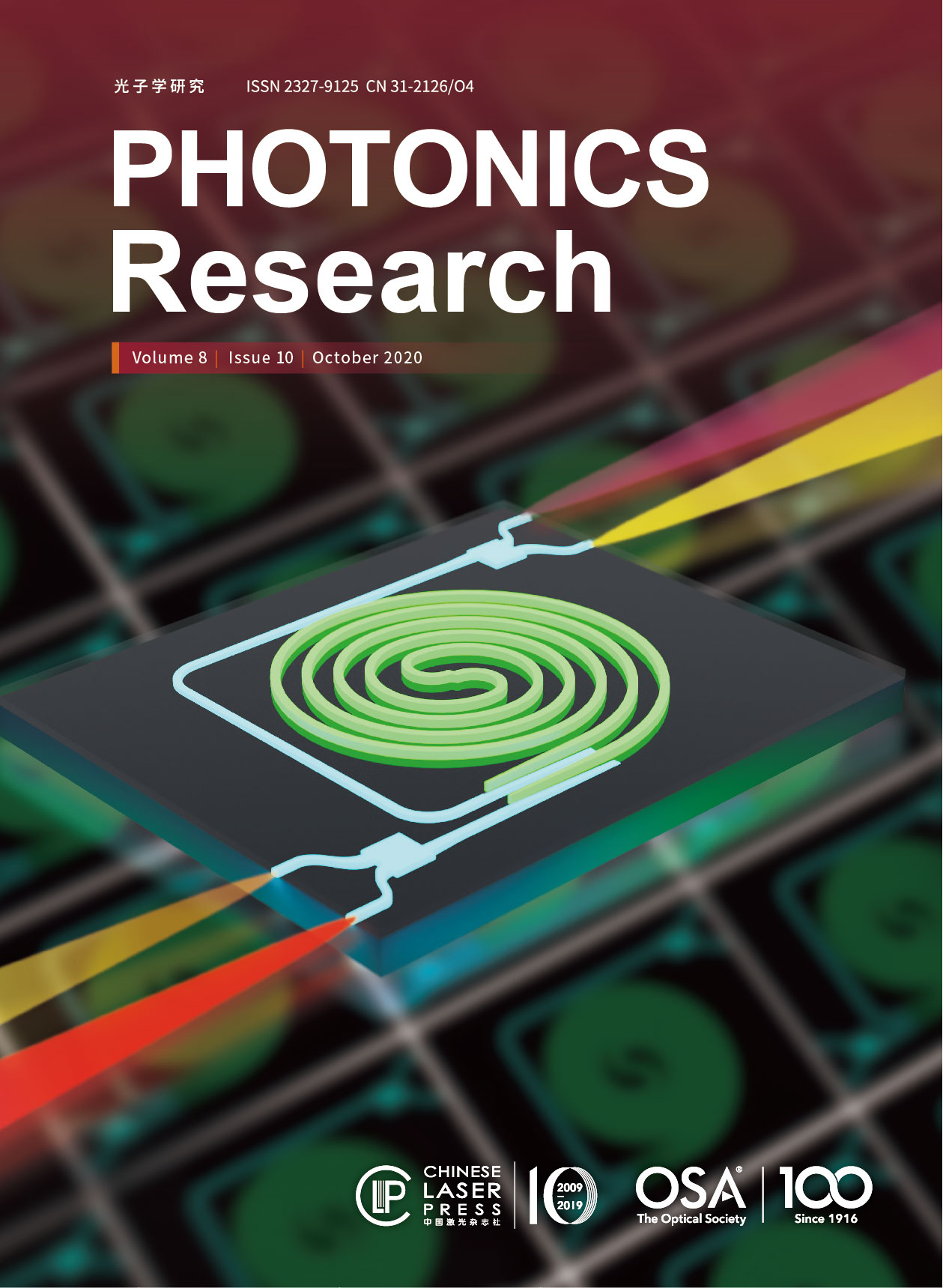Modifying the surface of poly[bis(4-phenyl)(2,4,6-trimethylphenyl)amine] (PTAA) with toluene during the high-speed spin-coating process of dimethylformamide considerably improves the wettability and morphology of PTAA and results in improvement of the crystallinity and absorption of perovskite film. The hole mobility and ohm contact have also been improved accordingly. Combined with these improved parameters, inverted perovskite solar cells with high efficiency of 19.13% and long-term stability could be achieved, which are much better than those with untreated PTAA. Importantly, our devices can keep 88.4% of the initial power conversion efficiency after 30 days of storage in ambient air.
.- Publication Date: Sep. 18, 2020
- Vol. 8, Issue 10, A39 (2020)
High magnetic field spectroscopy has been performed on lead chloride-based perovskite, a material that attracts significant interest for photovoltaic and photonic applications within the past decades. Optical properties being mainly driven by the exciton states, we have measured the fundamental parameters, such as the exciton binding energy, effective mass, and dielectric constant. Among the inorganic halide perovskites,
- Publication Date: Sep. 25, 2020
- Vol. 8, Issue 10, A50 (2020)
We predict the preservation of temporal indistinguishability of photons propagating through helical coupled-resonator optical waveguides (H-CROWs). H-CROWs exhibit a pseudospin-momentum locked dispersion, which we show suppresses on-site disorder-induced backscattering and group velocity fluctuations. We simulate numerically the propagation of two-photon wave packets, demonstrating that they exhibit almost perfect Hong–Ou–Mandel dip visibility and then can preserve their quantum coherence even in the presence of moderate disorder, in contrast with regular CROWs, which are highly sensitive to disorder. As indistinguishability is the most fundamental resource of quantum information processing, H-CROWs may find applications for the implementation of robust optical links and delay lines in the emerging quantum photonic communication and computational platforms.
.- Publication Date: Sep. 28, 2020
- Vol. 8, Issue 10, B15 (2020)
- Publication Date: Sep. 22, 2020
- Vol. 8, Issue 10, 1599 (2020)
- Publication Date: Sep. 28, 2020
- Vol. 8, Issue 10, 1624 (2020)
- Publication Date: Sep. 25, 2020
- Vol. 8, Issue 10, 1613 (2020)
- Publication Date: Sep. 28, 2020
- Vol. 8, Issue 10, 1634 (2020)
- Publication Date: Sep. 15, 2020
- Vol. 8, Issue 10, 1566 (2020)
- Publication Date: Sep. 18, 2020
- Vol. 8, Issue 10, 1580 (2020)
- Publication Date: Sep. 29, 2020
- Vol. 8, Issue 10, 1642 (2020)
- Publication Date: Sep. 21, 2020
- Vol. 8, Issue 10, 1586 (2020)
- Publication Date: Sep. 22, 2020
- Vol. 8, Issue 10, 1605 (2020)
- Publication Date: Sep. 10, 2020
- Vol. 8, Issue 10, 1558 (2020)
- Publication Date: Sep. 29, 2020
- Vol. 8, Issue 10, 1653 (2020)
- Publication Date: Sep. 10, 2020
- Vol. 8, Issue 10, 1551 (2020)
- Publication Date: Sep. 29, 2020
- Vol. 8, Issue 10, 1648 (2020)
- Publication Date: Sep. 18, 2020
- Vol. 8, Issue 10, 1573 (2020)
About the Cover
Wafer-scale monolithically integrated optical waveguide amplifier die via double-layer active-passive platform in the silicon nitride technology.















